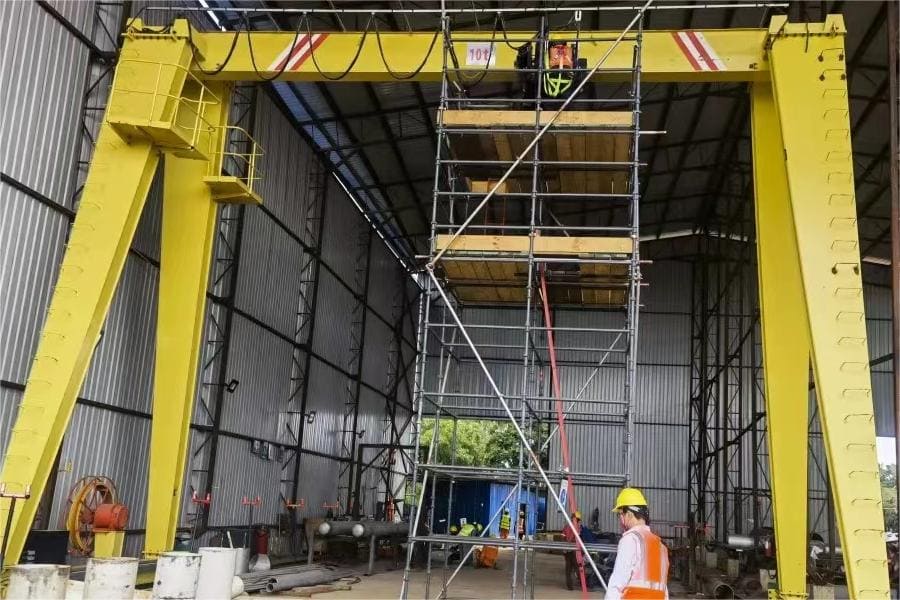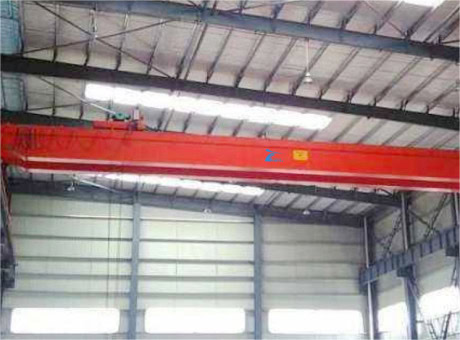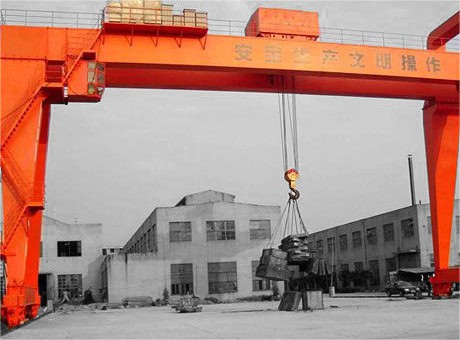Gantry crane is generally the same with overhead crane except that it is supported by legs. Instead of running along overhead runway, it can travel along rails mounted on the ground or run on wheels, allowing for the ease of movement and transportation. Warehouse gantry crane has many advantages and has been widely used in various industries.

High site utilization and operating range.
The metal structure of warehouse gantry crane is similar to a door frame. There are legs installed on both sides of the main beam, which can travel directly on the ground track. Both ends of the main beam can be equipped with outrigger cantilever beams, making gantry cranes widely used in port cargo yards and other places.
Strong adaptability.
Warehouse gantry crane is suitable for a variety of environments, such as ports, railways, logistics, construction and other fields.
Easy to operate.
It has a simple structure, easy operation, and can be used indoors and outdoors.
High efficiency and safety.
Industrial warehouse gantry crane has a high carrying capacity and operational flexibility. It can quickly complete operations such as lifting, handling and stacking of goods. The double-column structure design provides good stability.

Versatility.
In addition to basic lifting operations, it can also be used for lifting, loading and unloading, dumping, disassembly, maintenance and other operations.
Easy to maintain.
Low cost. Warehouse gantry crane on sale has been for more than ten years. The design takes into account the characteristics and components that are easy to disassemble and replace, which is convenient for maintenance and repair.
Multiple operating methods.
We have rich experience in warehouse gantry crane on sale. We can provide flexible operation options including cab operation, ground wire control operation and remote control operation.
Wide application.
It is suitable for many occasions, such as warehouses, stations, construction sites, hydropower stations, shipyards, etc.
High reliability.
Warehouse gantry crane can meet the needs of transporting goods without changing the factory structure.





















